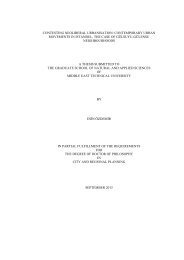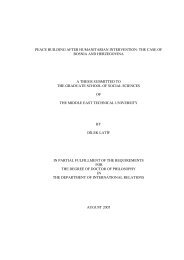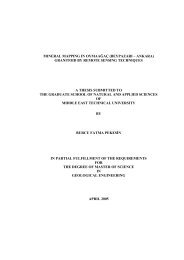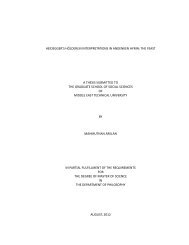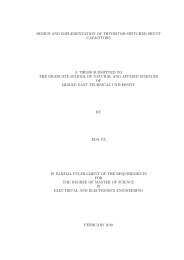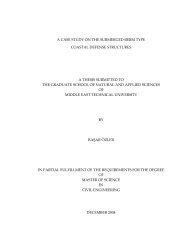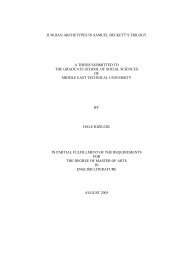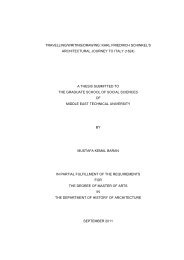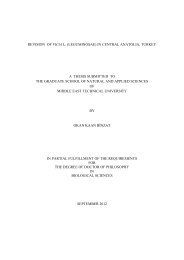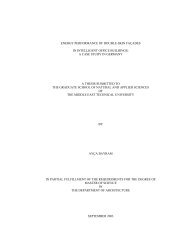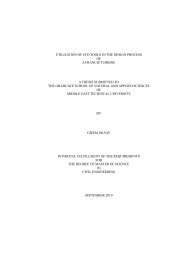View Original - Middle East Technical University
View Original - Middle East Technical University
View Original - Middle East Technical University
You also want an ePaper? Increase the reach of your titles
YUMPU automatically turns print PDFs into web optimized ePapers that Google loves.
profitability is squeezed by reduced prices in the face of downwardly inflexible<br />
costs’(ibid.:23-4). Regulation theory is not particularly against a theory of secular<br />
stagnation within capitalism or the ‘malign invisible hand’, though it is against<br />
theories of single-handed systematic crisis mechanisms. Brenner’s study of ‘self-<br />
generating series of steps resulting from individual(and collective) profit maximizing<br />
which leads not towards adjustment, but rather away from it’(ibid.) indeed narrows<br />
capitalism’s systematic contradictions to the single-handed mechanism of ‘over-<br />
capacity and over-production’ with ‘sunk costs’. For Fine et al.(1999:49) and many<br />
others, Brenner’s theory is complicit of further ‘lost analytical time’ in crisis theory<br />
largely in these terms. On the other hand, regulation theorists resort to an analysis of<br />
rate of profit not because such an analysis would ‘bring out the downward movement<br />
of profitability or its stagnation at an inadequate level which, in itself, would be an<br />
element of crisis(and which may be the case in certain situations)’, but more because<br />
of the fact that ‘taking the formation of the rate of profit as a guiding element,<br />
bringing out the tendencies and countertendencies intervening on this level, and thus<br />
identifying certain essential factors in the crisis’ is not in the least secondary to<br />
regulationist research on ‘growing disequilibrium between the forms of regulation and<br />
the state of structures at a given point’; even though the profit rate ‘cannot sum up by<br />
itself all the disequilibria competing to set off a major crisis’(Mazier et al. 1999).<br />
‘‘But no post-Fordism has emerged!’... and the theory is therefore false’ –there is<br />
perhaps an element of rage in Boyer’s words(2002:2). Nonetheless ‘a fully functional<br />
régulation mode, guiding a stable accumulation regime, may remain beyond the<br />
horizon’ as of yet, still ‘the cumulative changes brought about in a disequilibrated and<br />
unstable context assume ever more importance in the interpretation of capitalist<br />
systems’(Grahl and Teague 2000:167) especially, as in Boyer’s quondam aside, ‘when<br />
crises endure’(1990). Even though, ‘the interest of régulation theory is precisely its<br />
ability to determine many different accumulation regimes and potential modes of<br />
development in response to political conflicts and compromises’(Boyer 2002:3),<br />
regulationists are scarcely at one in their analysis of ongoing ‘cumulative changes’.<br />
That said, Parisian theorists no longer study the elements of the next model of growth<br />
89



